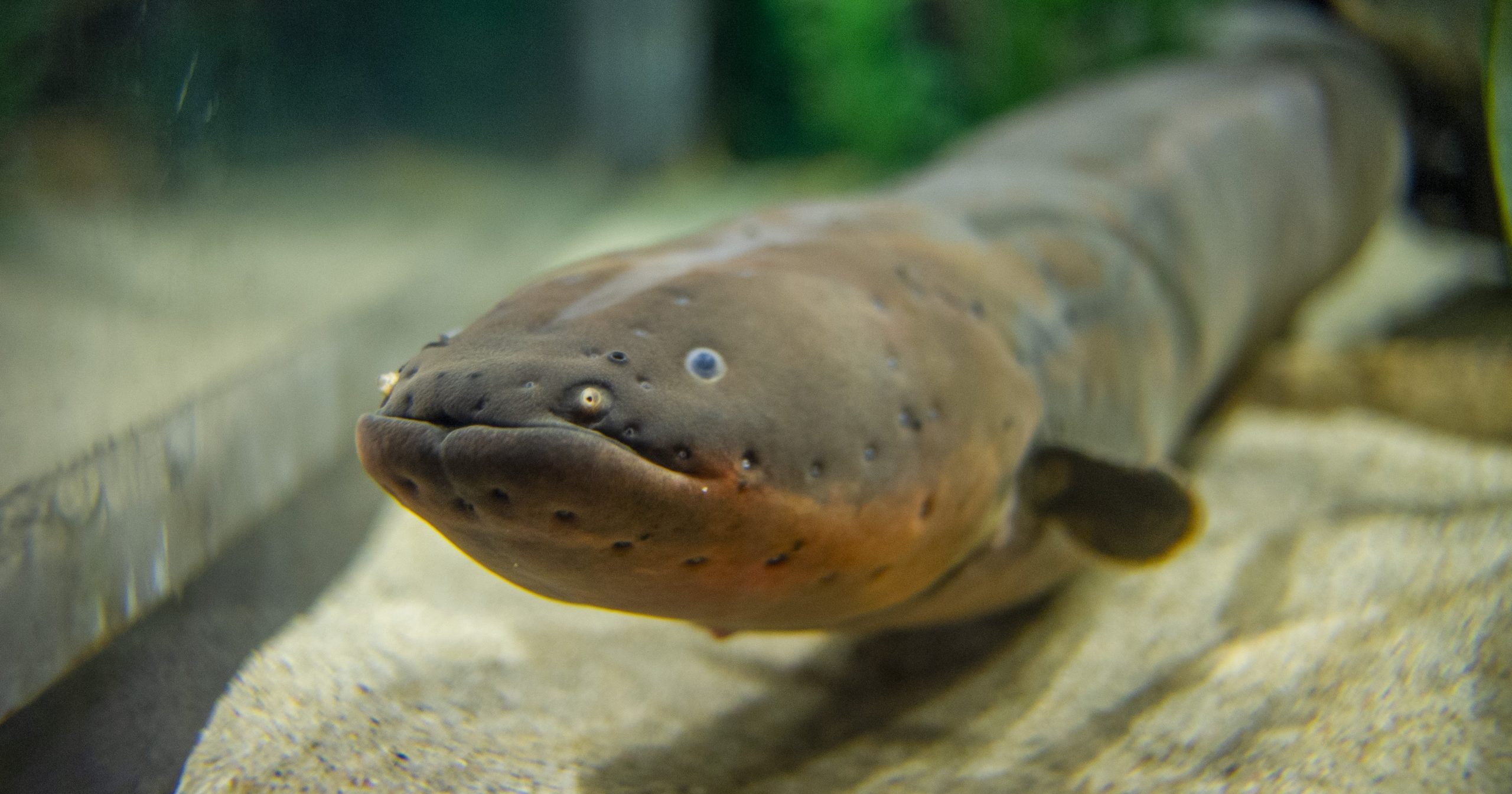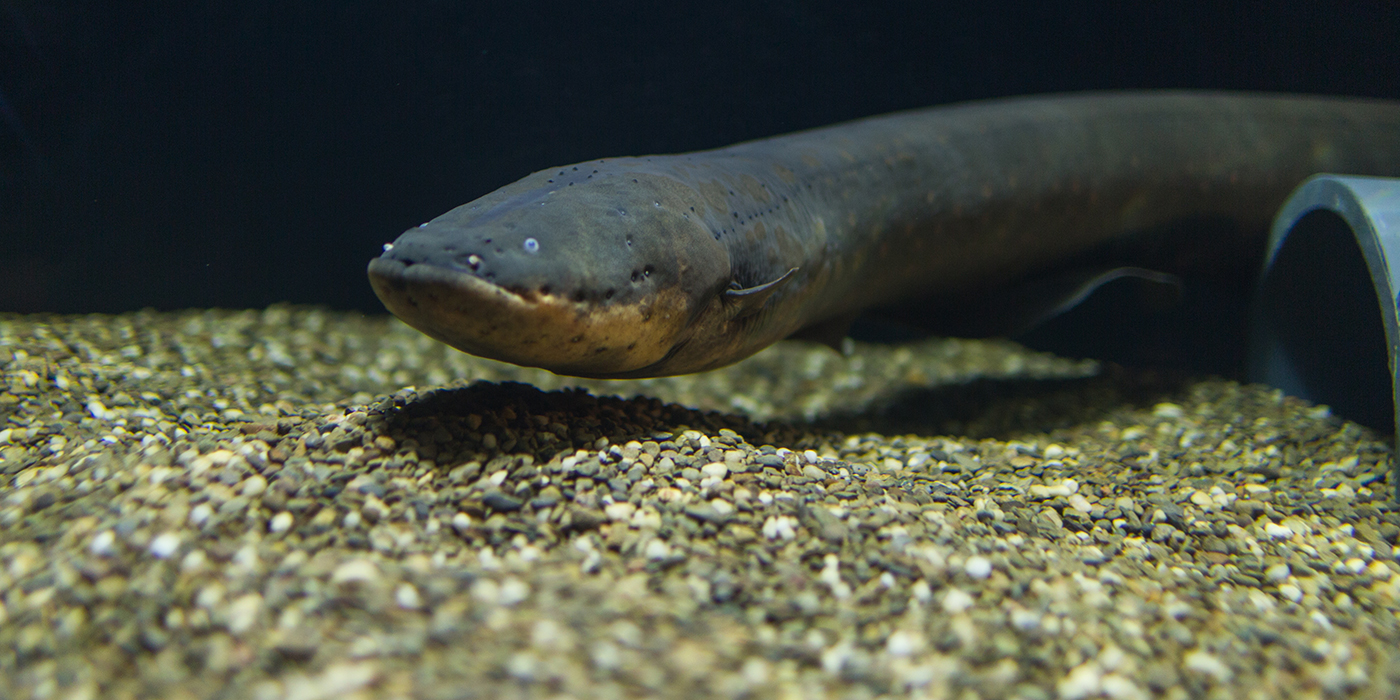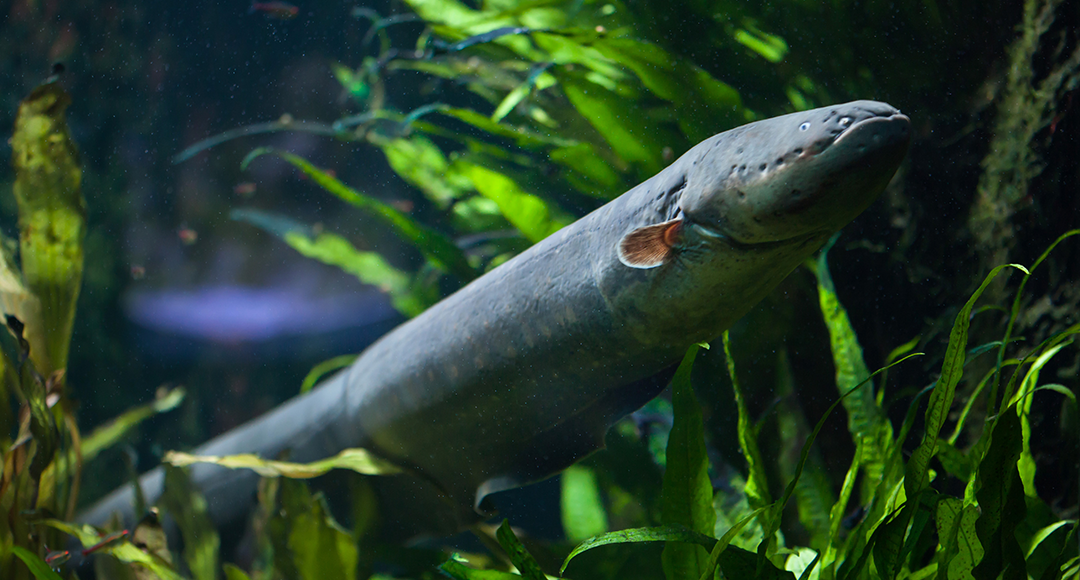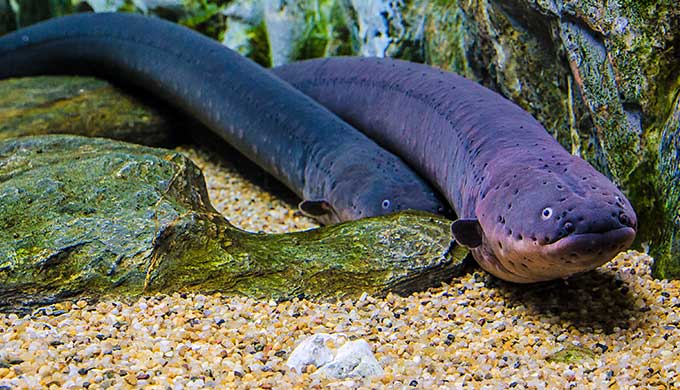





 found in South America, though they are primarily found in middle and lower Amazon and Orinoco river basins. |
 eats fish, crustaceans, insects and small vertebrates, such as amphibians, reptiles and mammals |

|
These famous freshwater predators get their name from the enormous electrical charge they can generate to stun prey and dissuade predators. Their bodies contain electric organs with about 6,000 specialized cells called electrocytes that store power like tiny batteries. When threatened or attacking prey, these cells will discharge simultaneously.
Electric eels are nocturnal, live in muddy, dark waters, and have poor eyesight. So instead of using eyes, electric eels emit a weak electric signal, which they use like radar to navigate, to find a mate, and to find prey. Once prey is found, electric eels will use a much stronger shock to stun prey, usually smaller fish.
The electric eel is able to produce electric shocks up to 600 volts and therefore is the most "electrical" fish in the world. This can be dangerous not only for its prey but also for human beings. Fortunately, the electric eel is not aggressive, and the electric shock hardly ever causes fatal accidents.